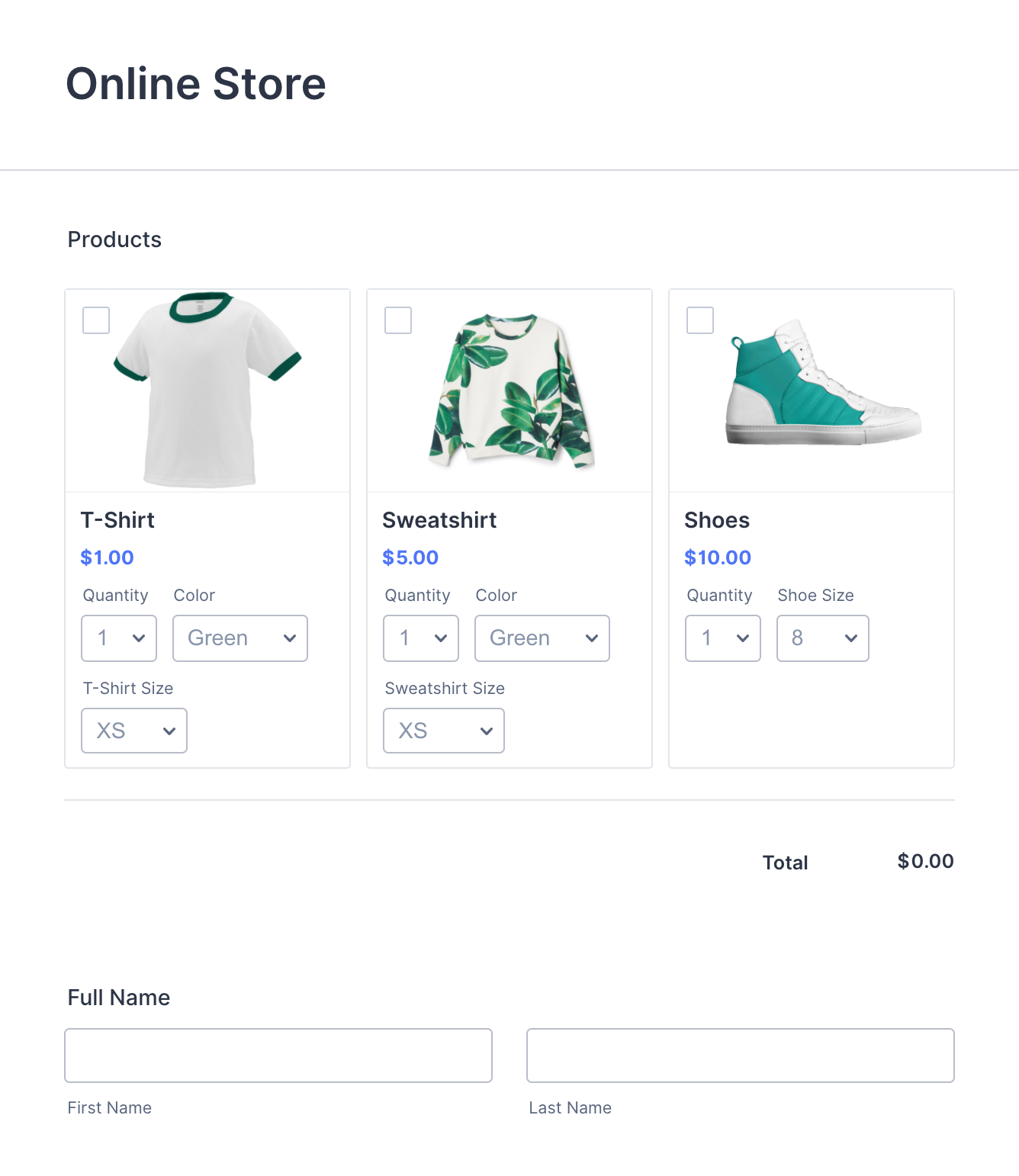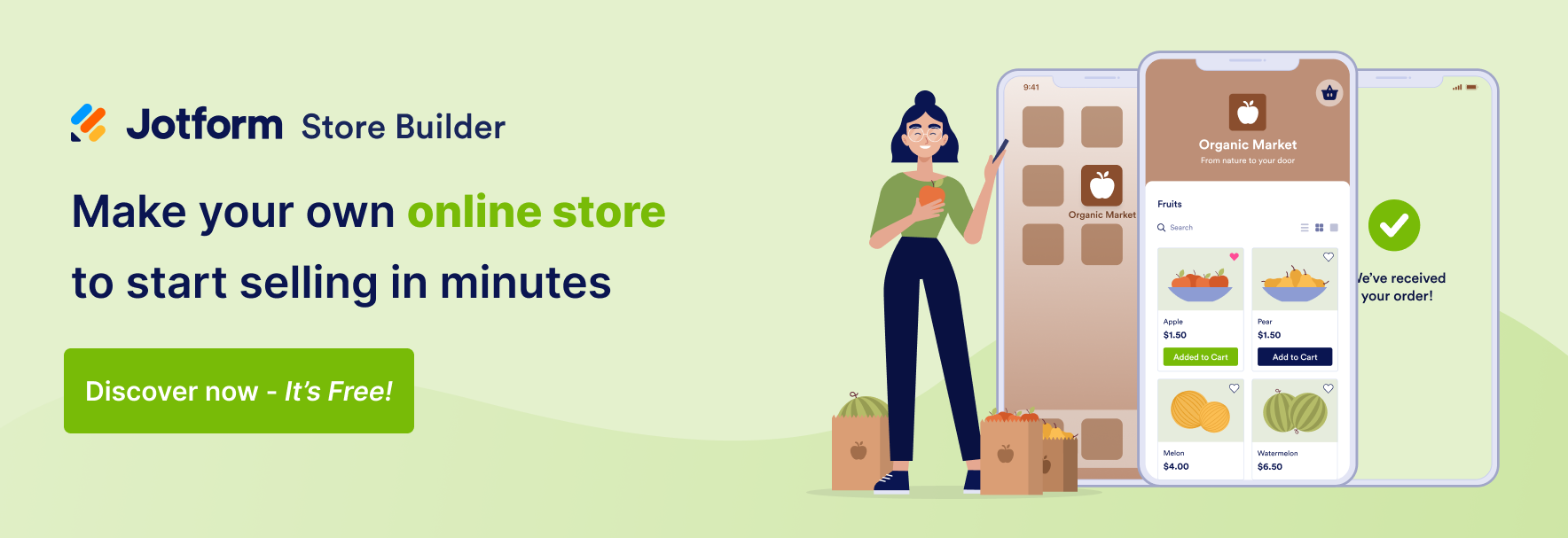Let’s say you have a long-running hobby of knitting scarves for your friends in the wintertime. Every time you give one away, your family and friends say you should try to sell them. Now, that might’ve been hard to do 10 years ago, but with the rise in e-commerce — and the ever-increasing number of ways people can set up a business — a small, online-only scarf business isn’t as crazy as it sounds.
That’s partly due to e-commerce platforms like Shopify, which is designed for any kind of business or product. Shopify developers want to make sure anyone can sell products, market themselves, and turn a profit — which is why the company’s mission is to knock down barriers and create a fair market for everyone.
Shopify does this in many ways — such as connecting with other services like Jotform and working to make sure the producer-to-consumer pipeline operates as smoothly as possible. Here’s how you can leverage Shopify to get the most out of your business.
Set up the buying process
Shopify developers have made sure Jotform works effectively with the Shopify platform. You can integrate your Shopify account with Jotform to gather additional data (like which geographic areas you do the most business in), develop marketing strategies, and create ways to track your orders. You can also generate receipts and tighten up security to protect your customers’ information.
Think about how you present yourself to your customers, and take time to figure out the payment and ordering methods that work best for you. This is especially important for smaller businesses, where the margin for error is slim and attention to detail is key.
Customize with embedded forms
Jotform has tons of online business forms that pair well with Shopify’s interface. For example, you can embed a customization request form for a specific product on your Shopify page. The process to do this is a bit involved, but these helpful guides should make things easier.
Jotform is also great for gathering data for further analysis. Make sure you’ve set up the backend integration between Jotform and Shopify correctly since you’ll be getting customer names and email addresses with every Shopify order. Be sure to include Jotform form fields that prompt customers to input this information, so that you can sync your records.
Collect payments
No one wants to use a business that makes the ordering process more difficult than it has to be, so it’s important to ensure that your payment collection mechanisms are in order.
Part of deciding how to set up your Shopify shop — and thinking like a Shopify developer — is understanding the integrations you can use. For example, with Jotform’s payment processing integrations, you can set up e-check and debit or credit card payments with connections to services like PayPal and Stripe. All you have to do is select the type of form you want to attach — whether it’s for an online order, donation, or other operation — and embed it onto your website.
Set up order forms
Maybe you’ve looked into the way Shopify’s pages work and decided you’d rather just use Jotform. That’s an easy option — Jotform has shopping page capabilities through its online order forms. You can choose from existing forms or create your own by customizing an order form template.
Transactions are secure, and you can easily gather and store customer data and payment information for future use. You can also format and customize each form with your branding, ensuring your user experience is as consistent and seamless as possible.
Explore alternatives
Your business will likely need more than one platform as it grows. Knowing what tools are out there could be the difference between a good revenue year and a great one. By exploring Shopify and its integrations, you can also understand when you might need to seek help elsewhere.
Jotform is a great alternative because it performs many of the same internal functions as Shopify. But there are a number of other applications you can choose from as well.
If you’re after better SEO, you might consider using BigCommerce. If you want a quick, easy setup process, you might find Weebly’s interface easier to use. And if you’re more focused on website design and development, Wix — which also offers e-commerce capabilities — might be the way to go.
It’s all about what you’re most comfortable with and what your overall goals are.
Maximize your business
As a business owner, it’s important to be proactive. That means staying aware of the platforms at your disposal so you continue adapting and improving. Whether that’s through Shopify, Jotform, or an alternative service, finding the right fit for your business will go a long way in helping you store information, take stock of where you are, and build a more prosperous future.























Send Comment: